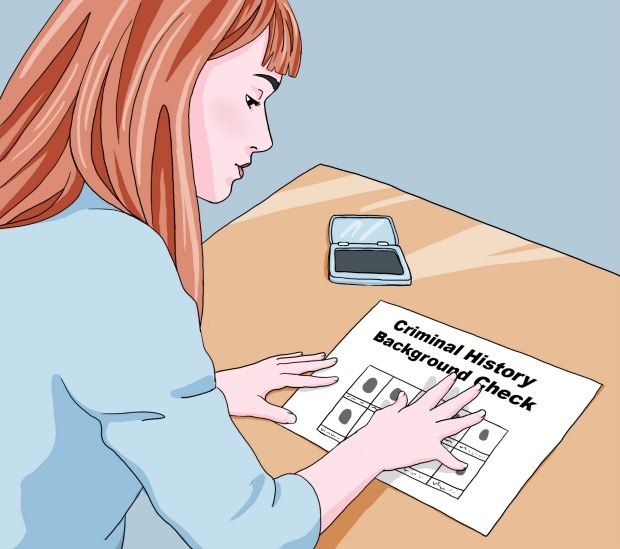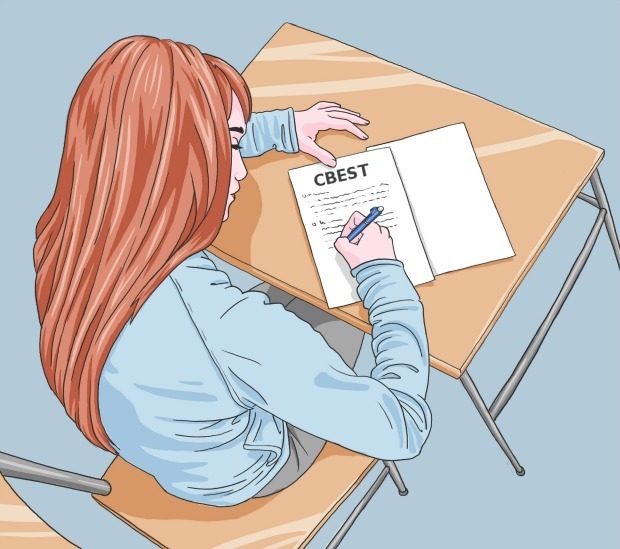Student success is only as good as teacher effectiveness. The State of California recognizes that in order to maintain effectiveness, certain teaching guidelines and regulations must be in place. Complete the following steps to earn your elementary certification.
Step 1 Enroll in a Teacher Education Program. The rewards of elementary education are indescribably great! One of the reasons the rewards are so great is because the work comes with many challenges. Some challenges are universal to all elementary age children, and some challenges are specific to the type of lesson you will be teaching. With elementary age children, the ability to brainstorm new and exciting ways to present the lessons can make a world of difference in the classroom. These skills are developed in teacher education programs.
In your teacher preparation program, you will hone your brainstorming talents; and you will learn the science of maintaining an orderly and productive classroom setting. You will learn the difference between effective and ineffective lesson delivery, and through practical experience, you will develop your own teaching style. You will learn to measure the complexity of your assignments; and you will learn various instructional techniques, and the best situations to apply them.
 Step 2 Get a criminal history background check. As a teacher (or as a student teacher), you will have unsupervised access, not only to the students, but to sensitive information about the students. Because of this access you will have to your students and their families, the CTC is required (by statute) to ensure that your moral and professional fitness has been shown to meet the standards as established by law. You must complete the background check and obtain a certificate of clearance prior to beginning your student teaching internship.
Step 2 Get a criminal history background check. As a teacher (or as a student teacher), you will have unsupervised access, not only to the students, but to sensitive information about the students. Because of this access you will have to your students and their families, the CTC is required (by statute) to ensure that your moral and professional fitness has been shown to meet the standards as established by law. You must complete the background check and obtain a certificate of clearance prior to beginning your student teaching internship.
The criminal background check is a two-part process. First, you must request to be fingerprinted and be fingerprinted by an official Live Scan service. (See listing of Live Scan fingerprinting service offices here; and see fingerprinting fees here.). Second, after you apply for the background check through the CTC’s Direct Web Application, and submit the required fee ($37.50 to $85, depending on residency), the CTC, through its state associations, arranges for the required state and federal background checks. When the CTC receives the results of your background checks, they issue a Certificate of Clearance, which is valid for five years.

Step 3 Take the CBEST examination. California’s children deserve a good education, and the State of California has promised to ensure that they receive one. In order to make this promise to the citizens of California, the State must set certain educational standards, and have a way to determine whether you, as a prospective teacher, meet those standards. This is done through the examination process. Although an exam score will not paint the entire picture of your competency and teaching ability, it will be a reliable tool to show your knowledge of the minimum requirements. It will also be tangible and quantifiable evidence of your pedagogical insight to deliver the information for the subjects you will teach.What are the required examinations for state elementary teaching certification? Upon completion of your Bachelor’s degree curriculum (or more advanced degree) from an accredited institution, you must pass the California Basic Educational Skills Test (CBEST) before enrolling in the multiple subject teacher preparation program. Upon completion of your teacher preparation program, you must pass the California Subject Examination for Teachers (CSET) to verify your competence in the subject matter you wish to teach.
CBEST
The CBEST is a series of three subtests. Each of which measures your pedagogical skills, and your aptitude for delivery of content in one of three areas: math, reading or writing. See specific test information on the CBEST test info page of the CTC website. Also available from the CTC website are preparation materials, such as a test outline, practice tests, and more.
NOTE: California offers three alternate options for meeting the basic skills requirement. If you fulfill any one of the following alternative options, you are not required to take the CBEST to earn a teaching credential:
- Pass all three subtests of CSET Multiple Subjects; and pass the CSET: Writing Skills subtest;
- Pass both the English and mathematics sections of the California State University (CSU) Early Assessment Program (EAP); or
- Pass both the CSU English Placement Test (EPT) and the Entry-Level Mathematics Test (ELM).
CSET
The CSET is a series of three subtests; each subtest measures your subject matter expertise in specific areas, such as reading and language, science and mathematics, physical education, health and the arts. The CSET Test Guide, accessible from the CTC website, provides general information about the CSET. Preparation materials such as a test outline, practice tests, and more are also available from the CTC website.
NOTE: California offers an alternate option for meeting the subject examination requirement. If you satisfactorily complete classroom education) in the subject matter you wish to teach, you are not required to take the CSET to earn a teaching credential.
 Step 4 Get the required Experience. The CTC is required to ensure that you can competently perform in the classroom; but such skills as presenting lessons and managing a classroom are difficult, if not impossible, to test using traditional testing methods. By sanctioning a teacher internship program, the CTC can place you in a real-life classroom setting with an experienced instructor so that you can learn the required skills through observation and hands-on practice. During your teaching internship, your sponsoring teacher will observe your performance, counsel you about ways to improve, and document your progress. The documentation of your progress is evaluated and recorded by the CTC; and it is used to determine your competence as a teacher, and to support the CTC’s position when they award your teaching credential.
Step 4 Get the required Experience. The CTC is required to ensure that you can competently perform in the classroom; but such skills as presenting lessons and managing a classroom are difficult, if not impossible, to test using traditional testing methods. By sanctioning a teacher internship program, the CTC can place you in a real-life classroom setting with an experienced instructor so that you can learn the required skills through observation and hands-on practice. During your teaching internship, your sponsoring teacher will observe your performance, counsel you about ways to improve, and document your progress. The documentation of your progress is evaluated and recorded by the CTC; and it is used to determine your competence as a teacher, and to support the CTC’s position when they award your teaching credential.
How does one gain the required experience?
Unlike most careers that are trial-by-fire propositions, teaching offers you an opportunity to gain a bit of real-life experience before you become fully accountable for your performance. Typically, your student teaching program places you at a host school that offers the same or similar classroom styles and methods you will learn during the classroom portion of your teacher preparation program. So, in essence, your student teaching program is simply a practical application of concepts you will have already learned. You will, undoubtedly see your sponsoring teacher apply his/her own style to the standard teaching methods. If your sponsoring teacher permits you to present lessons, you will learn about your strengths and weaknesses, and use the experience to develop your own unique style. You will see how your sponsoring teacher handles real-life classroom situations, and learn from his/her successes. It is through such observations and practice that you will gain the required experience.
What are the required hours of experience?
A Bachelor’s or more advanced degree from an accredited institution is a prerequisite to applying for an internship. No college credit is awarded for serving the internship. Generally, your student teaching internship lasts for one full school year (fall and spring semesters), but might last for two years, depending on the path you take to your credential. You should plan on keeping the same teaching hours your sponsoring teacher keeps. (Further information about the State of California rules governing teaching internships is available from the CTC website.)
What are some steps one could take in order to prepare for student teaching in order to better assure a successful experience?
As a student teacher, you are expected to have a professional attitude, and develop effective relationships in the school environment. So the following are a few steps you should take to help yourself out:
- First and foremost, decide to have a professional and positive attitude. Have a clear understanding of the purpose of student teaching, so that you feel fulfilled at the end of each day, not like you just “put in your time”. You will find that a positive attitude in the school environment can really make a difference when it comes to your success as a student teacher.
- Second, realize that you are going there to learn how to be an authority figure in a school environment. So, your knowledge of the school rules, philosophies, dress codes, regulations and customary practices is a key to your success. If possible, visit the school, get a copy of the school’s handbook and read it. You do not want to inadvertently break the rules!
- Third, plan to participate in school functions whenever possible, including parent-teacher conferences. Getting to know the students and analyzing your interactions with them is an important part of your student teaching experience.
- Finally, have some way to journal your experiences every day. Whether your journal method is a voice recorder, tablet, or pen and paper, logging your questions will be a tremendous help to you because you will have many questions for your sponsoring teacher, but no time to talk when the questions arise.
 Step 5 Complete required documentation and Apply for Certification. Application for an California teaching credential starts with creating a profile on the Educator Page of the CTC website. Through your CTC profile you can pay your processing fee for the application and upload the required documents to the CTC:
Step 5 Complete required documentation and Apply for Certification. Application for an California teaching credential starts with creating a profile on the Educator Page of the CTC website. Through your CTC profile you can pay your processing fee for the application and upload the required documents to the CTC:
- Application for Credential Authorizing Public School Service;
- Official university/college transcripts showing at least completion of an accredited Bachelor’s degree curriculum;
- Proof of passing the CBEST (or equivalent, see above section titled “Examinations->CBEST”);
- Proof of passing the CSET (or equivalent, see above section titled “Examinations->CSET”);
- A copy of the “Request for LiveScan Service” form with the receipt stamp.